Kristi Shepherd staggered across the courtyard to a gap in the fence, next to a tree bright with white apple blossoms, which opened on the south side of her sister’s apartment complex in West Valley City.
Her sister Cami had been missing for more than three months. Now a body had been found, floating in stagnant water in a nine-foot deep drain culvert next to a closed Kmart.
Kristi pleaded for information from the police, fearing the worst. She knew better than anyone her sister’s lengthy history of abuse, selling sex on the street, and years of meth use. She’d tried to be there when she could to support Cami’s struggles to pick herself up after each relapse.
Finally, it seemed, with the help of a support network made up of family, friends, church members and nonprofits dedicated to the homeless and victims of sex trafficking, the 5-foot-2-inch woman whom lifelong friend Nikki Zito said was “the best dressed homeless person you’ve ever seen,” had turned a corner.
She’d moved into her first apartment after more than a decade on the street and found work at the local Deseret Industries thrift store. And Cami had found a purpose: She had gone back to school to start the long journey to become a prosecutor for the state or federal government, so she could personally bring to justice the kind of men who had preyed on her when she was on the streets.
That was how Cami’s story was supposed to go.
“It doesn’t make sense,” Kristi repeated, again and again. “It’s not supposed to end like this.”
And so Kristi clung to wisps of hope. Maybe the body in the culvert was someone else. Of course it could be someone else. Cami wasn’t alone in her struggles, after all.
There are so many others.
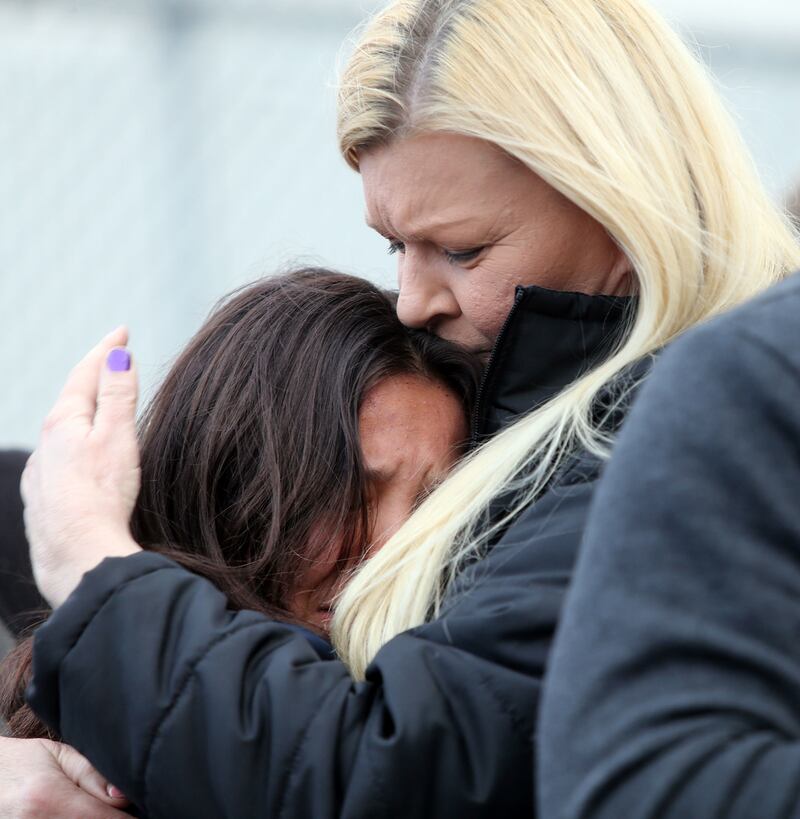
The forgotten
Across America, homeless women sell sex in no-tell motels or on the street to pay for a room night by night and for the drugs they need. They work in the back streets and blight-ridden thoroughfares of cities that are forgotten by city planners and the suburbs alike — unless you want to score drugs or pay for sex.
Because the women are housed, in the barest sense of the word, they are not included in the federal-government organized, national homeless census, Point in Time.
“They’re not counted, they’re not visible,” said Luciane Fangalua, who met Cami while chairing the Utah League of Women Voters’ human trafficking task force in early 2016, which sought to educate policymakers and legislators about the complex issue. “We don’t want them to exist. They’re an invisible group that we use and discard.”
These women are the forgotten casualties to be found at the intersection of homelessness, poverty, sexual violence and addiction. And it’s the desperate cravings of addiction that pull them into the world of trafficking, one fix at a time.
They’re not counted, they’re not visible. We don’t want them to exist. They’re an invisible group that we use and discard. – Luciane Fangalua
As children victimized by traffickers and predators, only to be rescued by Tim Ballard’s Operation Underground Railroad, they attract both sympathy and support. But as adults, they age out of the compassion they would have received as a child.
“We have a great deal of compassion as a public for children who suffer neglect and violence, but we don’t necessarily reach all the victims to help them,” said Salt Lake City Councilwoman Erin Mendenhall, a longtime advocate for street sex workers, many of whom live and work in her district. “When we don’t reach them, the outcome for some is that they end up as an adult in sexual exploitation and human trafficking.”
And they could be anyone. Cami’s story is just one example of a daughter raised in The Church of Jesus Christ of Latter-day Saints by a dedicated single mother. She had siblings who tried all they could to support her, no matter the choices she made. While she was never interviewed by a reporter, through extensive interviews with family, friends, street sex workers, advocates, counselors, law enforcement and attorneys, a portrait emerged of a complex, determined woman who refused to be broken by predatory men or the lifestyle some subjected her to in exchange for drugs.
Women and men who sell sex have many names. Words like “whore,” “hooker” and “prostitute” have been rejected by trafficking survivors and their advocates for the moralizing and criminalizing baggage they carry, while contemporary terms like sex worker are viewed by some as problematic, because they imply a freedom of choice, rather than coercion by others or factors like addiction and poverty.

“When you’re talking about sex work, there’s a moral, political and social history to it,” said University of Utah professor Annie Isabel Fukushima, a consultant for the national anti-trafficking network, National Freedom USA, after a reporter referenced issues surrounding language.
“Just call her Cami. That’s who she is. She’s Cami.”
In Salt Lake City, homeless and medical services outreach nonprofits estimate a population of between 500 and 600 street sex workers. In this twilight world, women like Cami appear on the street, then disappear, their fate unknown.
Nationwide, the number of sex trafficking survivors is at an “epidemic level” said Laura Lederer, a state department adviser on sex trafficking. Not that she has hard statistics to back her claim; for all the talk of so many politicians about the moral imperative of fighting human trafficking, the U.S. government has yet to fund a national trafficking study. The best she can point to, in order to substantiate her claim, is the rising number of homeless youth in the U.S.
A 2017 research study by the University of Pennsylvania and Loyola University, conducted at youth shelters in 13 cities in the U.S. and Canada, found 15 percent of homeless youth are sex-trafficked, with young women and LGBTQ youth particularly impacted. The National Network for Youth estimates that 4.2 million youth from ages 13 to 25 experience homelessness, which means that at minimum over 630,000 youth each year are victims of sex trafficking.
That’s the equivalent of a city the size of Boston.
Many are runaways, some fleeing abuse at home, others escaping violence at a foster care home. Many homeless youth simply age out of the foster care system and end up on the streets with nowhere to go. This is where invisible lives begin, with homeless youth sleeping in cars, couch-surfing, engaging in survival sex in exchange for a bed for the night, most haunted by the trauma of abuse they experienced as a child.
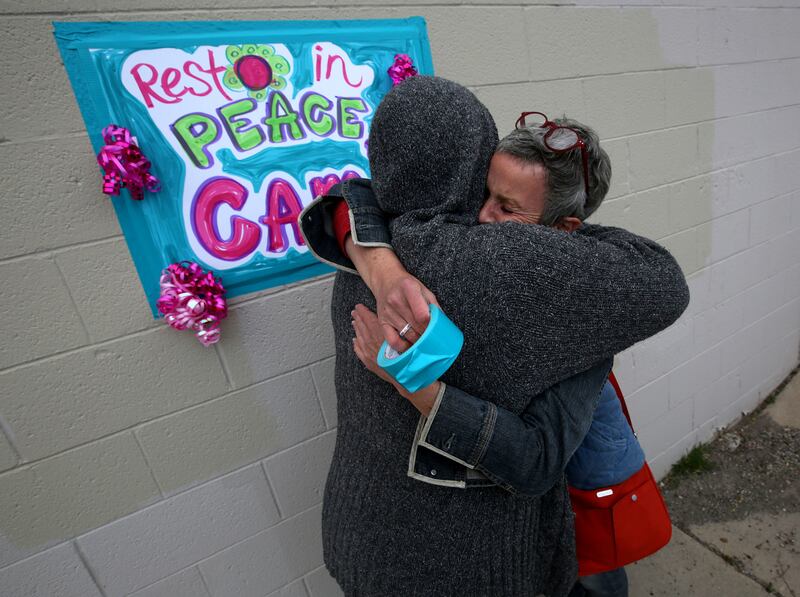
“Women use because of childhood and adolescent trauma,” said Matt Pierce, who for 18 months, until April 2018, did medical outreach in a supplies-stocked van in Salt Lake City several days a week for a local homeless nonprofit.
“Addiction and opiates, particularly heroin, numb the body and mind to old experiences,” but sex work only compounds existing trauma, he said.
Society, Lederer said, deals with homelessness, addiction and trafficking as separate issues.
“In reality these disparate issues are inextricably bound together,” said Lederer, who has interviewed more than 300 survivors in 22 cities, learning in the process that 84 percent were addicted. Cami’s story, she said, “is emblematic of the complexity of this problem,” in that for her, as for so many, all these problems intersect and start to spill out into public view, with tragic consequences.
“Survivors tell you everybody likes a nice victim, no one likes an angry, devastated person,” Lederer said. “These aren’t pretty stories. It’s the opposite of ‘Pretty Woman.’ And it’s very hard to put them back together again. We just have to do better. There’s just so many people we are failing.”
Survivors tell you everybody likes a nice victim, no one likes an angry, devastated person. These aren’t pretty stories. ... We just have to do better. There’s just so many people we are failing. – Laura Lederer, a state department adviser on sex trafficking
Victims and survivors of sex trafficking come from every strata of society, from the impoverished to the wealthy. Traffickers hang out at the homeless shelter, the corner store, or the suburban mall, always looking “for someone in need of something,” said Utah Attorney General veteran trafficking prosecutor Russell Smith. He related the story of a Nevada FBI agent who, despite having his daughter’s boyfriend to dinner, had no idea the 19-year-old was grooming his 17-year-old daughter for prostitution. The two first met when he struck up a casual conversation with her at a mall.
Traffickers can range from a boyfriend or a roommate who uses drugs and coercion as a means of controlling their victim, through a solo operator illegally running out of a motel, a nail salon or a massage parlor — what law enforcement call commercial sex operations, typically staffed with women held by fraud and coercion. From there it extends to gangs running women on a few streets or out of hotels through online sex ads, to highly organized international criminal operations that traffic women from one country to another.
Traffickers, whether alone or in groups, exploit vulnerabilities, and they’re not always male. Smith recalled one woman who loved to brag about how she had “used a Utah citizen’s disability as a way to manipulate them into performing commercial sex acts."
Victims-in-waiting, Smith said, “are not hard to find.”

“It impacts people across gender, class, ability and background,” Fukushima said. “It touches people regardless of their income and capital.”
If Cami is a poster-person for sex trafficking victims, she’s also somewhat unique in her determination to bring traffickers to justice and emblematic of the challenges survivors face in trying to tell their stories.
For years she tried to report her traffickers to police departments and state investigators, when the majority of survivors out of fear or mistrust would have nothing to do with reporting crime. She wrote an anonymous article in early 2016 about her life for an educational study on trafficking prepared by nonpartisan policy group Utah League of Women Voters that went to Utah legislators. She held a public event in March 2016 in Liberty Park to tell people about trafficking. But trauma, meth-induced paranoia, and other issues derailed her attempts to give law enforcement information that could lead to arrests.
“The only reason nothing gets done is because we are drug addicts and homeless,” Cami wrote in an April 2017 Facebook post.
If she couldn’t get cops and prosecutors to bring them down, she vowed to become an instrument of justice for other trafficked women. So she decided to go to school and eventually prosecute the men herself.
One cop who worked with Cami and believed she was a victim of traffickers was Salt Lake City Police Sgt Michele Ross. She was convinced that behind the paranoia and incoherence that dogged Cami’s repeated attempts to get justice, there lay a traumatic history of sex trafficking. “For one person to be so persistent, makes me believe there was something to it,” Ross said. “You just don’t see it very often. There has to be something there.”
A spiral into addiction
The roots of Cami’s vulnerability to traffickers, she wrote in an autobiographical sketch for the 2016 League of Voters study, lay in her childhood.

Born in Thailand on April 1, 1975, Cami and her twin brother Kim were rescued from a life of parental neglect and abandonment in 1978, after she had become wrapped in barbed wire and fallen into a canal, only for Kim to jump in to save her. An agency called the Mission of Hope put them up for international adoption.They were taken in by a Latter-day Saint widow who lived in Holladay and would adopt eight children in all.
“I did not ask to be raised by an adoptive single parent with no father ever in my home or in my life,” Cami wrote in the sketch. “I did not ask to be molested by a man in my ward as a small child.” Her molester, Kristi said, went to prison after being convicted of child sexual abuse.
While multiple relatives of Cami recalled the prosecution and incarceration of Cami’s abuser, no one could recall his name. “All of us just shut that out,” Kristi said.
Their adoptive mother juggled multiple part-time jobs, along with her kids, to pay bills, but then died unexpectedly of breast cancer in 1991, when the twins were 15.
Cami became pregnant at 16 by her boyfriend, with whom she had four children in succession by the time she was 21. Cami and her boyfriend fought constantly, their children raised by the man’s parents. She started using cocaine and crack in early 2000, then meth in 2003, when she also encountered problems with the law with a March 2003, third-degree felony forgery conviction in an Ogden district court. A marriage ended in divorce and shortly after she became homeless.
What led to her becoming homeless, other than her descent into addiction, her family doesn’t know. Those are Cami’s lost years, relatives said, long periods of silence punctuated only by an occasional voice mail: “Hi Sis. It’s me. I’m still alive. Love you.”
In her one-page autobiography, Cami documented her allegations of being trafficked. An unnamed “boyfriend/drug dealer,” she wrote, gave her injections of meth and GBH, commonly known as the date-rape drug, which rendered her semi-conscious, “so that he can charge $20 a person to men” who were lining up to rape her. She also highlighted how “a man whom I loved and thought was my protector” had secretly videotaped them having sex and sold the material online.
Kristi witnessed the aftermath of a trafficking incident in summer 2013 after Cami told her she’d been held in a house, drugged and repeatedly raped. When Cami told her sister her back was burning, Kristi lifted her shirt and found her back marked by cigarette burns.
Cami’s 12 reports to three local law enforcement agencies included complaints of being given unidentified drugs by boyfriends that rendered her unconscious, sexual assault allegations, and nonconsensual filming. None resulted in subsequent prosecutions. What’s apparent from the reports is how Cami’s drug addiction and trauma rendered her value as a witness to her own victimization painfully problematic.
Fukushima wasn’t surprised to learn that Cami wasn’t able to coherently report her own trafficking.
“People who have addiction tied to trauma have a really hard time to heal from it,” Fukushima said. “I’ve done tons of interviews and survivors have a hard time in general remembering specifics of abuse because of trauma. Compound that with addiction, then it totally makes sense … actually, it sounds more believable.”
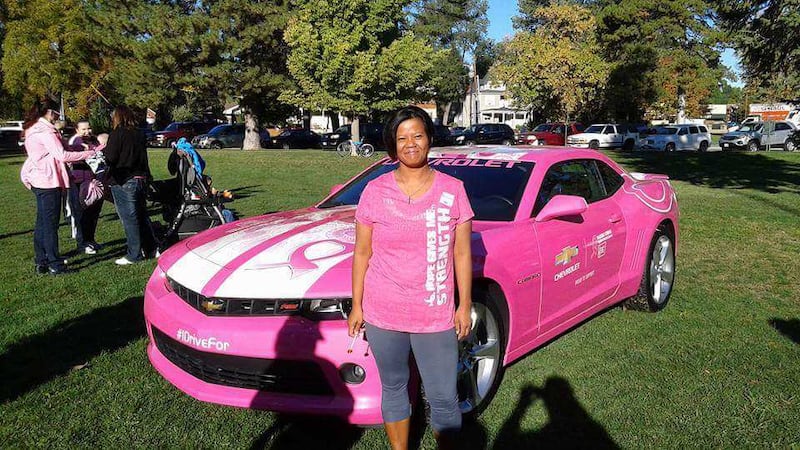
It wasn’t only her drug use that got in the way. Cami often showed her fiery temper, verbally abusing officers she thought weren’t sympathetic or looked down on her, or getting in the face of homeless men she saw abusing their girlfriends.
Her temper also got the better of her when she saw her on-and-off again boyfriend, in line at a downtown homeless clinic for services, months after she’d reported him to the police for hitting her and putting a gun to her head. She tried to stab him and was arrested.
Third District Court judge Denise Lindberg ordered Cami to serve 90 days in jail for attempted aggravated assault and then placed her on probation in January 2014. Cami lived at a domestic violence shelter in Ogden for a month, but was asked to leave because of conflicts with staff and residents, according to court documents. Street sex workers often report being shunned by other women at domestic violence shelters because they don’t want their children to associate with them. When Cami didn’t report to Adult Probation & Parole, Lindberg issued an arrest warrant and sent her back to jail for six months. Released again in October, Cami bounced from one shelter to another.
Jumana Dhaher, a counselor for the refugee and trafficking victim agency Asian Association of Utah, identified one challenge facing Cami in a letter to the court: “As she continues on her path to recovery," Dhaher wrote, “it is likely PTSD symptoms will become stronger.” The further Cami progressed with sobriety, Dhaher believed, the more her demons would emerge.
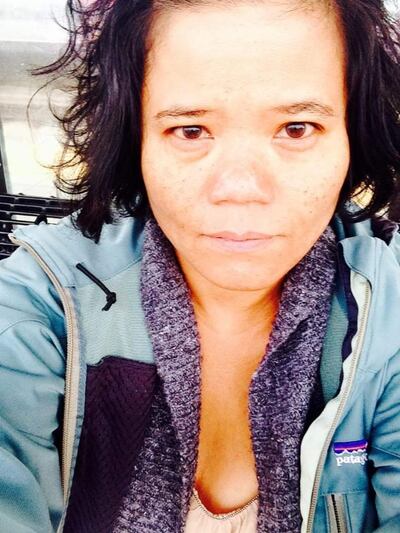
Cami did another 45 days in jail and was released with both sobriety and an even greater determination to go after her traffickers. She had to come across as more credible, she knew, and through a counselor-friend, she attended the February 2016 human trafficking conference organized by the University of Utah's S.J. Quinney College of Law. She wore a $1 version of the “Choose the Right” ring she bought at Deseret Book as a reflection of her commitment to sobriety.
She mixed with agents from the FBI and Homeland Security, went to workshops to learn how to better identify trafficking victims, and met Utah Attorney General Sean Reyes. In a text, Reyes wrote that he recalled Cami, as “willing to use the immense pain of her victimization to help others.”
Cami decided to go directly to the public and in the spring of 2016, organized an anti-trafficking booth beneath the majestic trees that ring Liberty Park. On the phone, sister Kristi talked her through her nervousness in the days running up to her Liberty Park event. Her family rallied round to help, with cousin Arlen Shepherd’s brother printing T-shirts for her with a logo she’d designed of a unicorn with the words “Not for sale” emblazoned across its ribs. No one interviewed for this story, however, attended the event. In some cases, that was because of frustration.
“It was her fight, not mine,” Kristi said. “I wanted her to be clean and a mom.”
The day before, Cami called Kristi, “I told her to remember what she was fighting for and make the best of it.” Cami manned the booth, wearing her T-shirt, and talked to people who approached her about trafficking. Afterward, she told Kristi how glad she was she had done it. “It was a good start,” she told Kristi. “The next one will be bigger.”
But with each step she took away from the underworld of drugs, violence and abusive, controlling men, addiction, paranoia and living on the street dragged her back to the drug-dealing sex traffickers she’d fought so hard to escape.


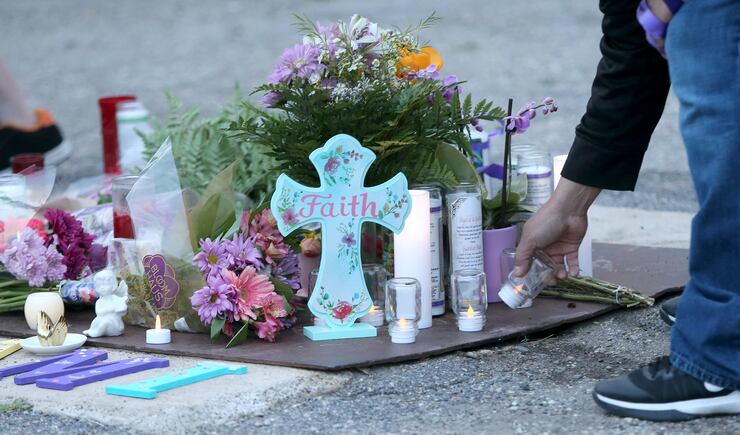

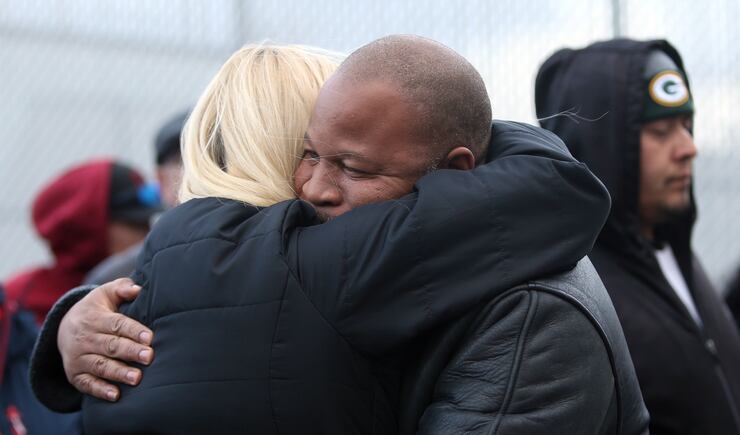
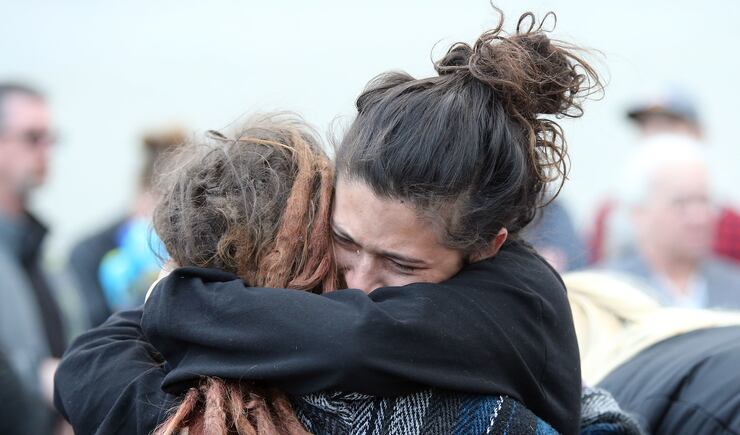
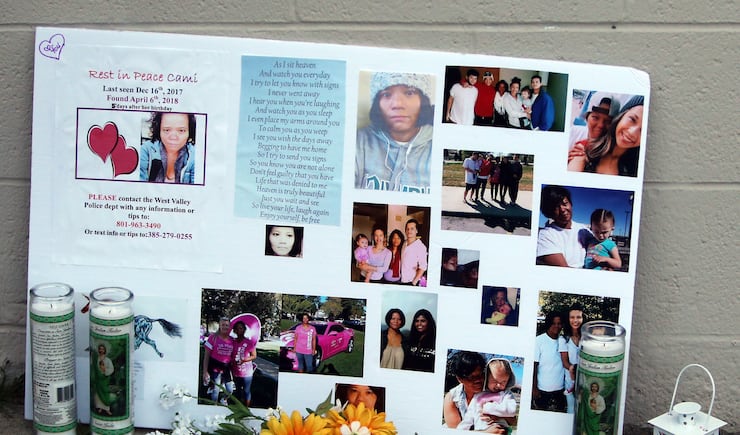

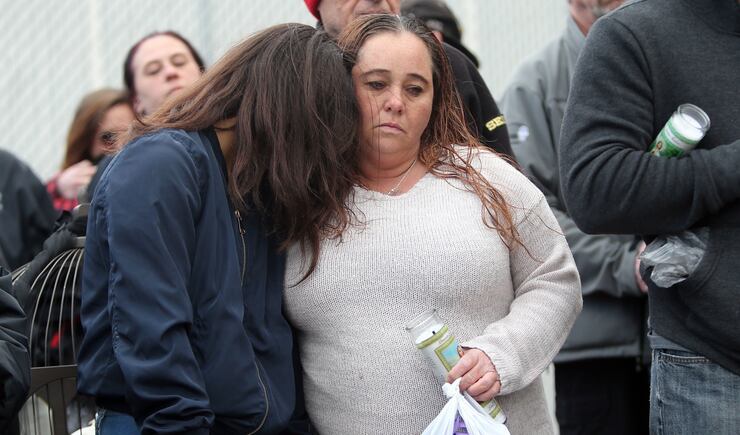
She tried to work with investigators at the Utah Attorney General’s office, leaving sometimes incoherent messages on a trafficking hotline that she had information. “She’d call, we’d set up meetings with her, but she never connected,” said SECURE Strike Force chief Leo Lucey. He believed she was trafficked, “and wish we could have done something about it.”
Glimmers of hope
Cami finally got off Salt Lake City’s streets in February 2017, moving into a one-bedroom studio in a Westside apartment complex called the Redwood, thanks in no small part to the efforts of Asian Association of Utah’s trafficking victim case manager Gina Salazar.
Kristi took her sister shopping at a nearby Deseret Industries thrift store with a voucher Cami got from the bishop at a local congregation. The sisters picked out a comforter, pillowcases and dishes for Cami’s new home. On the front door she hung a picture of Jesus Christ to mark her home as Christian. She shared the studio apartment with two cats, Hope and Faith, and occasionally an injured pigeon she would try to nurse back to health. Pigeons and doves were angels, she would tell her friends, and if they were close then she was safe.
She’d also signed up with Salt Lake Community College for computer basics classes, the only problem being that she didn’t have a computer to do homework on. Nevertheless, she was determined to fulfill her dreams of going to law school and prosecuting traffickers. And she had the perfect playing card, she’d tell friends, to show jurors that she had survived the world victims came from: a missing tooth in her bright, defiant smile, knocked out by an old boyfriend.

Adapting to life inside four walls wasn’t easy, said cousin Arlen Shepherd. She’d feel alone, leave for a day or two, then go back. Over time, she felt safe enough to sleep in her bed and know no one would hurt her.
Arlen Shepherd tried to get her to keep her home “a safe haven,” he said, and not let people in. But that ran contrary to the unwritten rule of the homeless, born out of the interdependency that life on the streets demands, which is to always offer help when you can to others. So she’d let in someone she’d grown to trust, such as a homeless mother with a child. Word got around where she lived, however, and soon she complained to friends that people seeking a place to sleep would try to kick her door down if she didn’t let them in.
Cami’s determination to change meant she would try to do too much, Kristi worried. “She tried to stay clean, go to school and work and it would get stressful and she would cave,” Kristi said.
The pressures built up in November 2017, when she started dating a 42-year–old carpenter and neighbor. The carpenter requested anonymity out of concern over local traffickers possibly connected with Cami’s disappearance.
They watched movies and cooked meals at each other’s apartments. She’d bake and fry chicken, while he made soul food. He gave her a painting he’d done of a Chinese junk forging out to sea, waves crashing against a rocky shoreline. But Cami struggled with how to respond and act around “a regular guy,” as opposed to a “john,” several sex workers said she told them.

After just two weeks Cami blurted out a marriage proposal.
“No, we can’t do that,” her boyfriend recalled telling her. With both of them newly sober, he felt their sobriety had to come first. He felt overwhelmed, but then realized she felt the same, if only by her own emotions.
Cami stood there for a moment in silence, then left. Rather than continue with the stark, emotionally charged terrain of their relationship, she returned to a familiar, if deadly one: trading sex for meth. In the face of rejection, she returned to a world where she’d find if not safety or even comfort, then at least numbness.
“It was almost like she didn’t know how to handle things when they were good,” Kristi said.
In the days running up to her disappearance in early December, Cami scribbled her way through a “bad high,” as she described it in a notebook full of half-started, scrawled letters typical of meth addicts struggling to fill endless hours while high. “This dope is making me feel like bugs are on me,” she wrote. She worried that “someone has my key to my house and they smoked in my house. I can smell it too.” She wrote how she wanted to get back her sobriety so she could see her children and grandchildren for Christmas. On Dec. 13, she scribbled a three-page letter to whoever might find her journal.
“I am sorry I made a mess of things here,” she wrote.
Three days later, she disappeared.
A disappearance and discovery
Those who saw Cami at the Christmas party on Dec. 16, thrown by the Asian Association of Utah at the drop-in center for street sex workers, were struck by her thinness, a sign she was on meth again. A heavy-set man in a truck had dropped her off at the association’s nondescript, backstreet offices near downtown Salt Lake City. It’s a location known only to the association, their “working girl” clients, along with sometimes pimps, johns and local cops. He’d looked like a “trick,” several attending the party said.

Salazar had presents for all of her clients, but Cami left the gift of china Salazar had for her behind. Three days later, Salazar and another AAU case manager took the present to Cami’s apartment. At first, a woman inside wouldn’t open the front door, but when she did, two men and two women filed out, and Cami was nowhere to be seen.
The apartment smelt rank. Salazar opened the blinds and took in the holes punched in walls, pieces of glass on the floor, a used syringe in the bathroom. She scribbled out a note to her longtime client expressing concern about the condition of her home and that she would shortly lose her housing if she didn’t pay her rent, and left it beneath the Christmas present.
As the weeks went on, Cami’s circle of family and friends became increasingly concerned by her silence. “She always called me for the holidays, to wish me merry Christmas, happy New Year,” said Zito, her third-grade teacher and lifelong friend. “The longer that we went without hearing from Cami the more frightened I became.”
Kristi filed a missing person’s report with the police in early February 2018 and began to search for her sister. In the first days of her search, she checked out her sister’s haunts: the motels, gas stations, truck stops, ERs and the downtown shelter, the Road Home, handing out flyers she’d had made up.

Every time in the past she’d looked for Cami, she’d found her within two days, usually near the downtown shelter. “This is the first time I haven’t been able to find her,” she said in late March.
Kristi was increasingly frustrated with West Valley detective assigned to her sister’s case. She was uncertain what if anything the police were doing. She worried that because of Cami’s history of drugs and sex work, her disappearance wasn’t taken seriously. “If I was missing, they would have looked harder,” she said. “I felt the family had to do more because the police were doing nothing.”
West Valley City Police Chief Colleen Jacobs disagreed. “Our detectives have been in areas she was known to frequent, shelters, homeless camps,” she said a few weeks into the time Cami that went missing. “We will investigate every avenue we have available to us.”
The detective talked to one homeless man several times who’d been identified by a homeless woman with mental health issues as Cami’s killer, but, Chief Jacobs said, there was no indication he had had “any recent contact with Cami or that there was any nefarious activity.”
And then, on April 11, a body was found.
Each day, Kristi waited desperately for a phone call to learn if the body was or wasn’t her sister. Five days later, a detective called Kristi to tell her that they were driving up to see her. The car pulled up into the driveway and two detectives filed wordlessly into her living room. One sat on a love seat, the other a recliner, and from the moment they sat down, all Kristi wanted was that they would leave. She knew, even before they spoke, what they had come to say: Cami was dead.
Her sister’s fate washed over her. It was as if her heart had been ripped from her chest.
As painful as that was for Kristi, what one of the detectives then told her made the situation far harder to bear. The way the cops saw it, she had brought her death on herself. The detective suggested to Kristi that the 120-pound Cami had somehow lifted the 150-pound rusted lid off the drainage on her own and crawled down into the watery depths to get out of the cold.
Numb with disbelief, Kristi stared at him, realizing that the officers viewed her sister as one more addict whose drug-related death didn’t merit a serious investigation. Cami had always been afraid of water since as a very young child she’d fallen into a canal in Thailand and almost drowned. She could never have lifted the lid on her own. And why would she? Her apartment was a minute’s walk away.
“If we don’t have any leads,” the detective continued, “I’m just preparing you that we may have to close the case.”
The detectives got into their car and drove off. As the door shut, Kristi fell to her knees in shock, confusion and wordless rage at how they had blamed Cami for her own demise. “I was having such a hard time processing it all, that it even happened,” she said. “It was like it was just a bad dream.”

A final farewell
By the time family and friends gathered to say farewell to Cami on an overcast May 5 at the Cottonwood 10th Ward, the gruesome discovery of a body and its identification had long since vanished from the news. Those gathered were alone with their grief, their memories and the many unanswered questions surrounding her death.
After the service, in the parking lot, the mourners gathered in a circle and held hands, most wearing a T-shirt Kristi prepared with Cami’s smiling face printed on it. A pastor from the Salt Lake Mission who knew Cami led them in prayer.
Then Kristi and Cami’s children handed out 80 white and purple balloons. After a brief countdown, everyone released the balloons. They rose quickly on the heels of a northern breeze, up, up into the stormy sky.
All, that is, but two white balloons that snag on the branches of one of the tall trees surrounding the lot, where they struggle, without success, to heed the wind and rise to the heavens.











